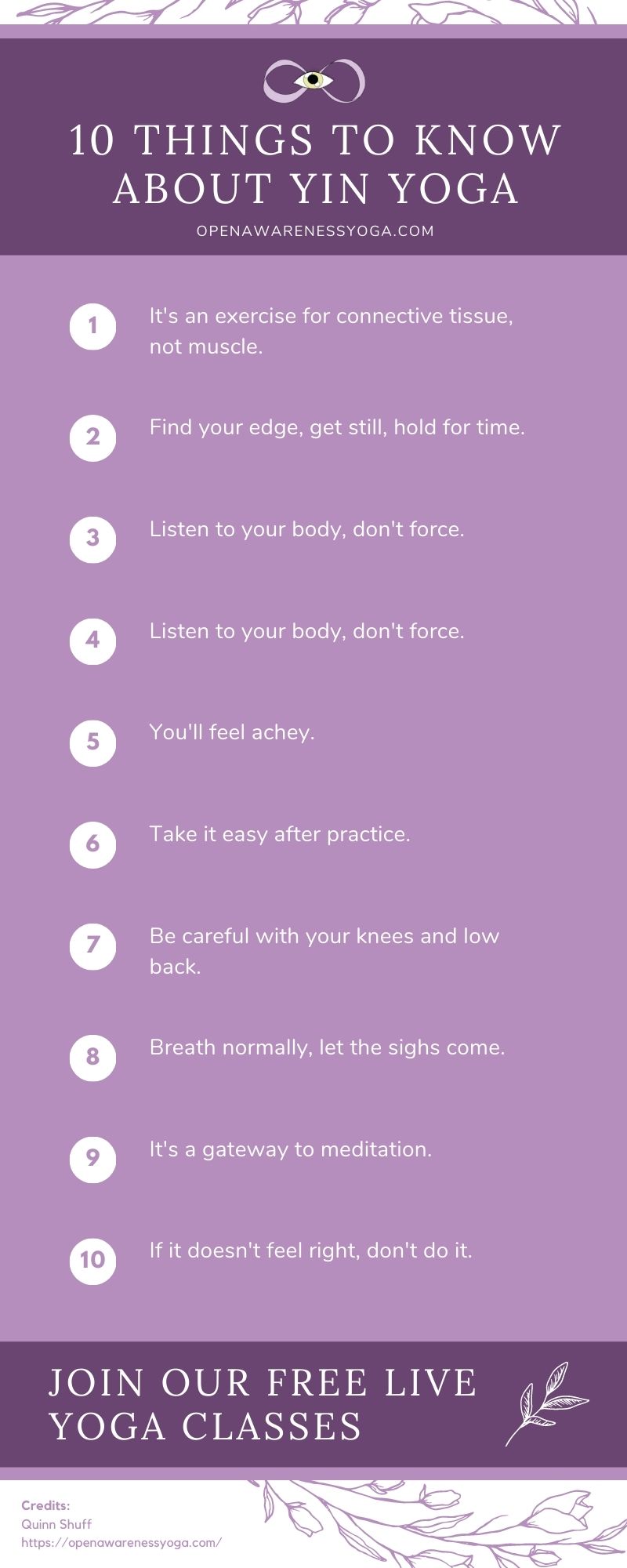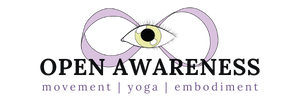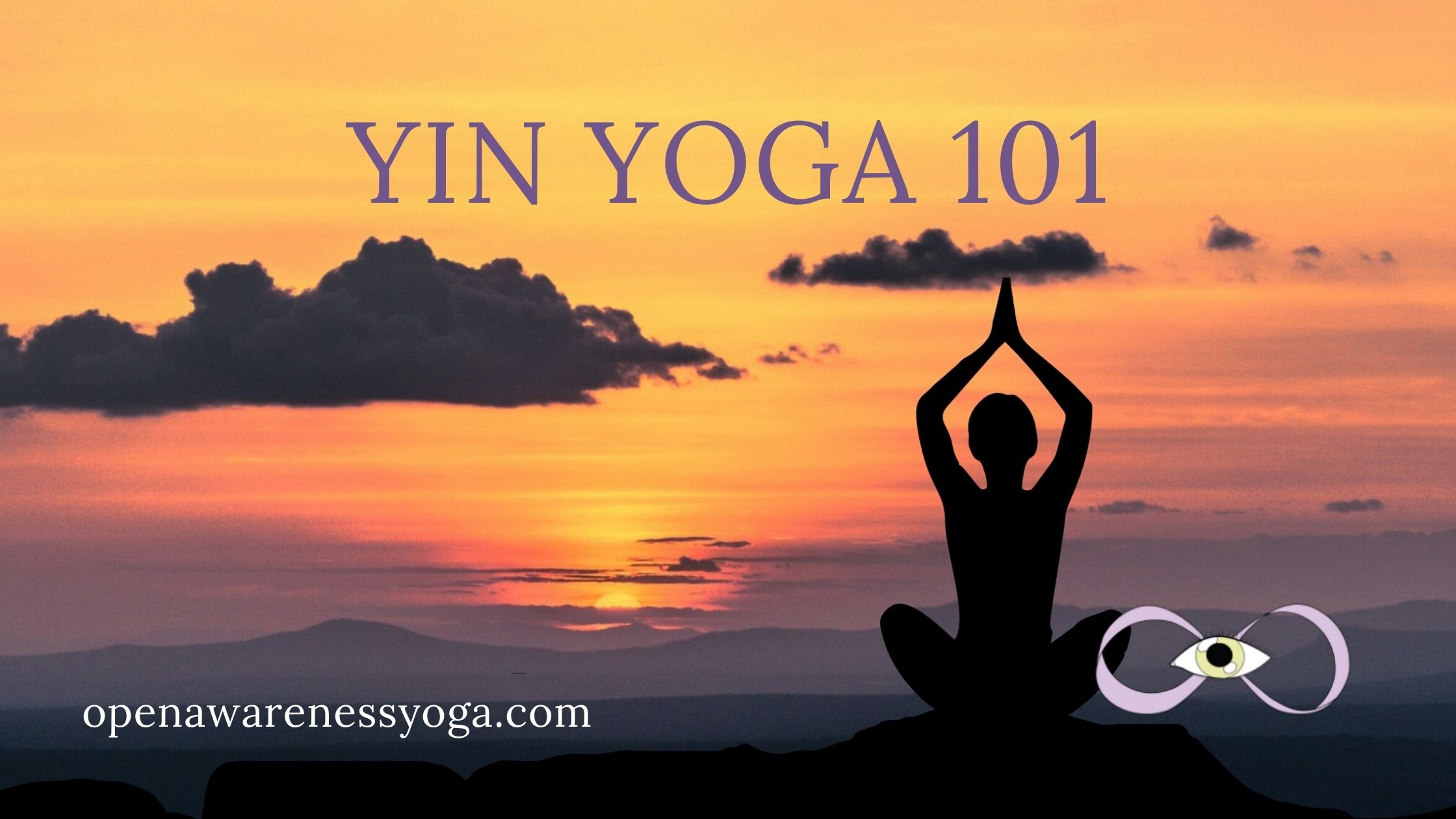
07 Jan Yin Yoga 101: Ten Things You Need to Know
If you’re new to yin yoga there are a few things you should know going in. Here are 10 guidelines for beginners to consider.
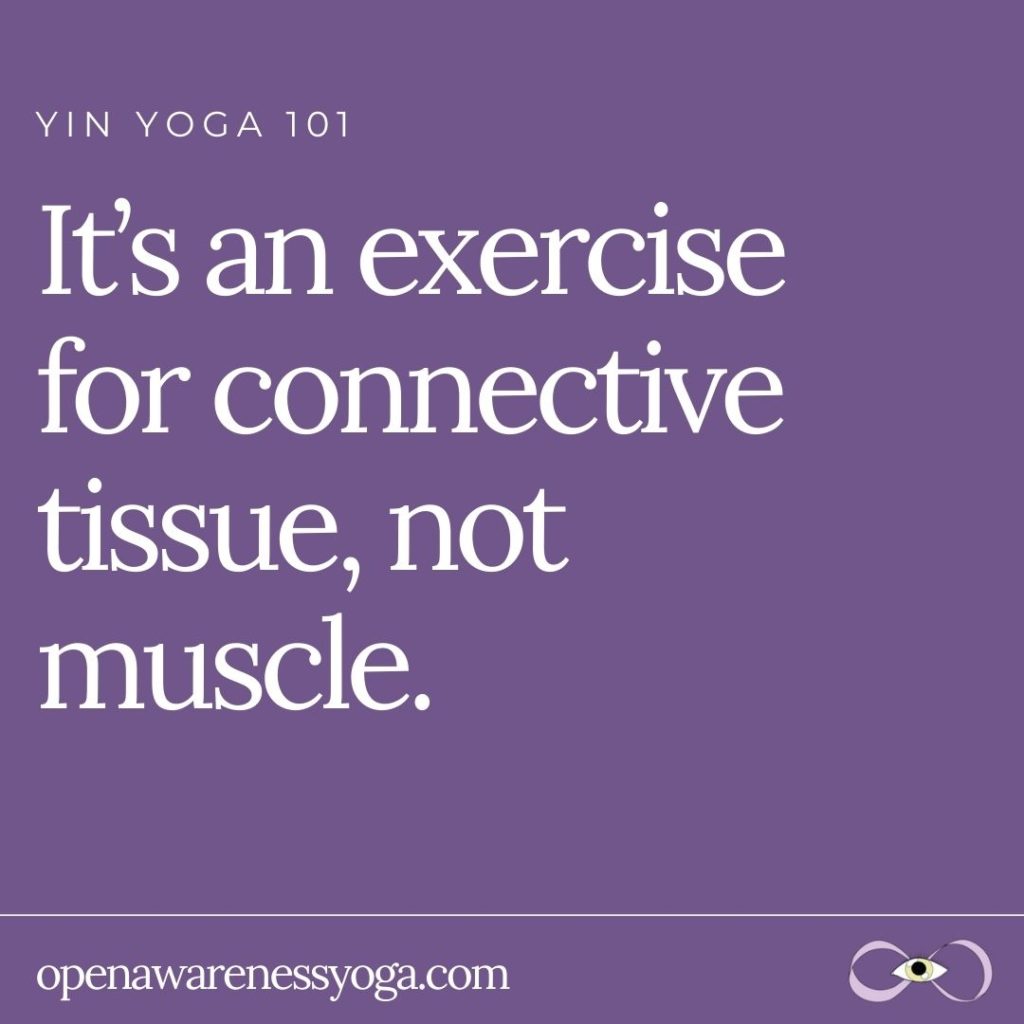
1. It’s an exercise for connective tissue, not muscle.
Yin is an exercise for your deep connective tissues, like fascia and ligaments, not your muscles. In exercising muscles you warm up, build heat, contract and hold. This is what we typically think about when we talk about physical exercise, but it’s not the only way.
When your intention is to exercise connective tissues, you must apply long-held, passive stress.This is a good kind of stress for the body. Connective tissue is like silly putty. If you pull it apart quickly, it will break. If instead, you pull it apart very slowly, it will stretch quite far. The good news is, if we pull the body apart quickly the muscles activate to protect us. However, we don’t want the muscles hogging the exercise in yin.
To get the exercise into the connective tissues (and not the muscles), you must practice cold, not in a heated room or after physical activity. First, we position the body (go into the yin pose), and then we make an effort to release the muscles from the bones. To apply stress to the connective tissues, we must also practice relaxing. In this stressed out world, you can see the value in that, right?
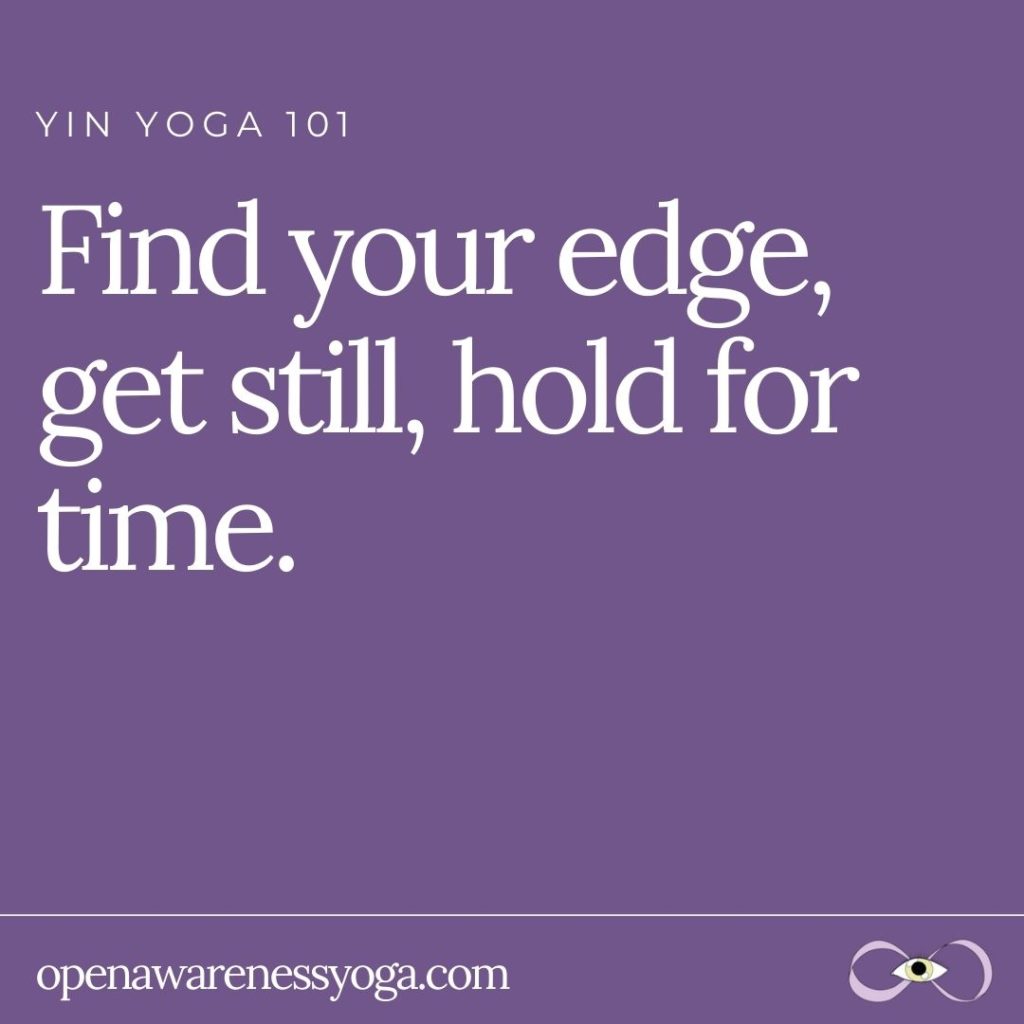
2. Find your edge, get still, hold for time.
The process of yin yoga is three-fold: find your edge, get still, hold for time.
Finding your edge means moving your body to a place where you feel something. 30-70% of your maximum will do. As yin master Bernie Clark says, if you’re feeling something, you’re doing it right. It doesn’t have to be, and shouldn’t be, as far as you can pull yourself into a shape. You won’t need force in yin.
Getting still might require you to use yoga props (bolsters, blankets, and blocks) to support any parts of your body that feel like they’re hanging in space. Propping your body in a pose helps the muscles relax, which in turn helps the stress of the pose enter the deeper connective tissues (where we want it).
Finally, hold for time. In yin, you’ll stay in the pose for 3-5 minutes. This is why 30-70% of your maximum is just fine…you’re there a while. The actual change that your connective tissues undergo when they are being exercised/stressed is called creep, and research shows that it takes about 4 minutes for maximum creep to take place. (For more on creep, check out this article by Bernie Clark.)
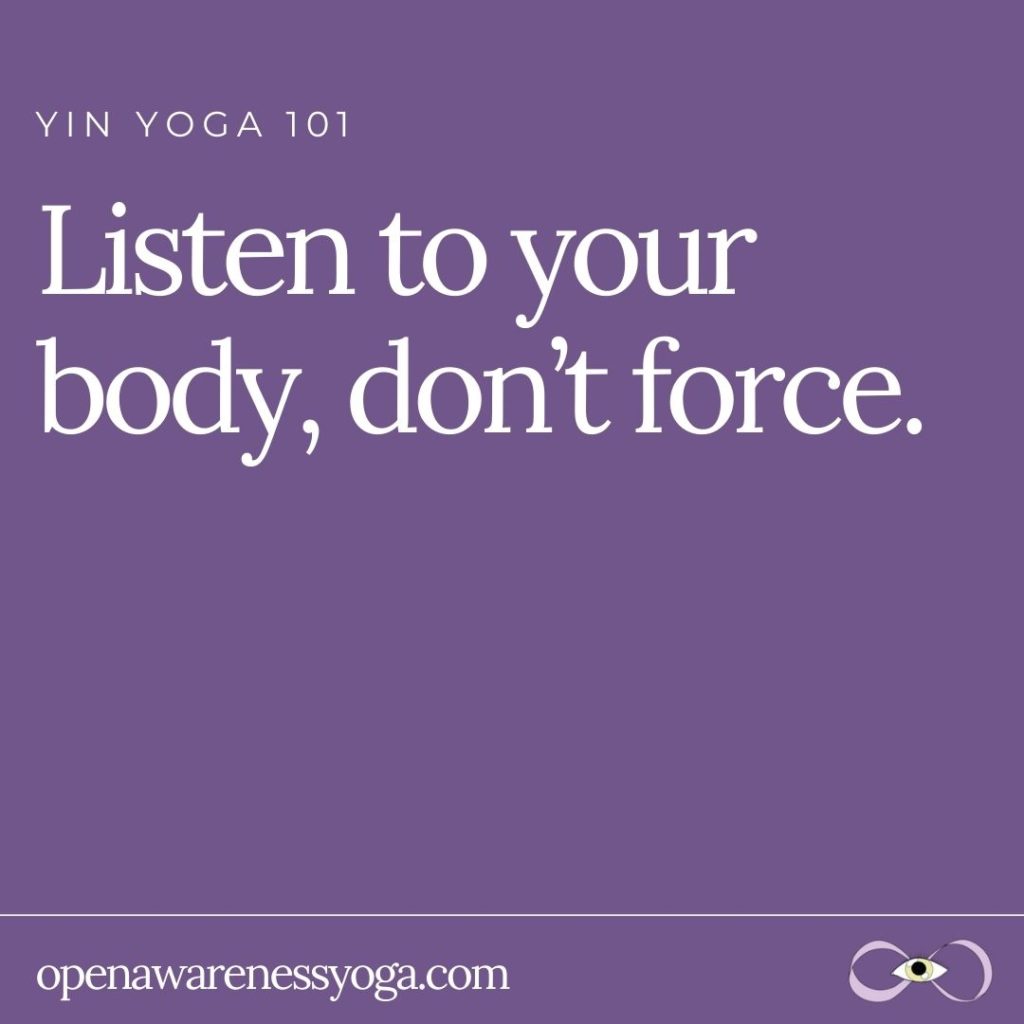
3. Listen to your body, don’t force.
You don’t have to hold the pose the whole time. You will be more successful in your practice if you slowly move out of a shape or adjust your position when your body asks you to do so. Maybe this means you stay the entire five minutes, maybe this means you’re cooked after the first two. That is quite alright.
You don’t need permission from the teacher to come out of the pose. You don’t need permission from the teacher to use props in a certain way. You don’t need permission to adjust your body to a place of more comfort. If you question the sensation you’re feeling, backing out slightly may be just what you need in order to relax and benefit from the practice.
One of the beautiful things about yin yoga is that you are learning to feel and respond to your own body. You’re tuning into yourself, not so much tuning into the guidance of the teacher.
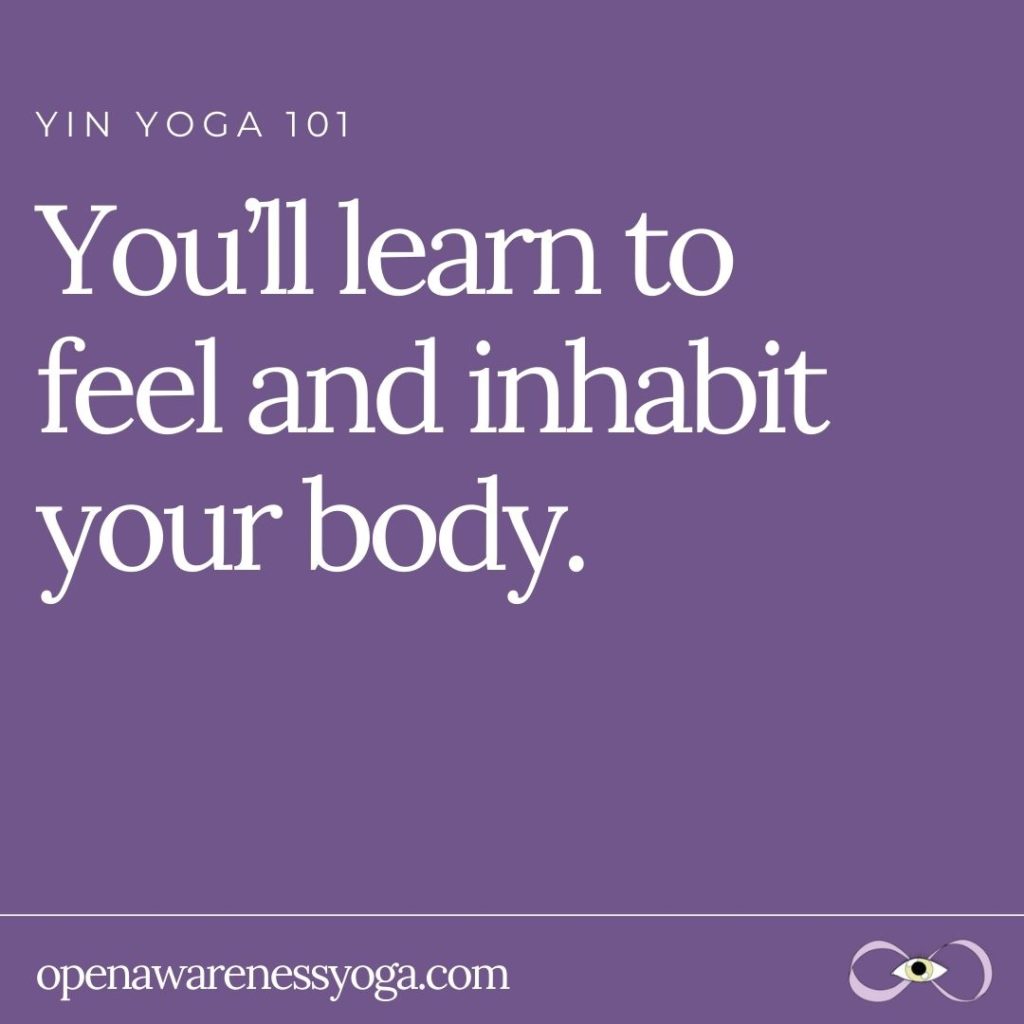
4. You’ll learn to feel and inhabit your body.
When you first start practicing yin, in many ways you are just learning to feel your body again. Through the practice you learn to distinguish good pain from bad pain, to recognize when you are forcing your body into poses or holding back, and how to minimize effort and release expectation.
You learn how to let go of doing things the “right way.” You are, in part, your body. You’re not being your body wrong. In class, you learn to feel, inhabit, respect and respond to your actual body as it actually is right here, right now.
I often say during yin class that there is no wrong way to do the pose, as long as you are moving slowly and responding to the messages from your body. Now, maybe there’s a better way, or something new to experiment with, and that’s why you go to an in-person class with a teacher, but ultimately in yin you’re embarking on a journey of learning to feel and confidently inhabit your own body in ways that feel right to you. At the end of the day, no one can know how and what you feel better than you. You know what’s best for you. Practice helps you know.
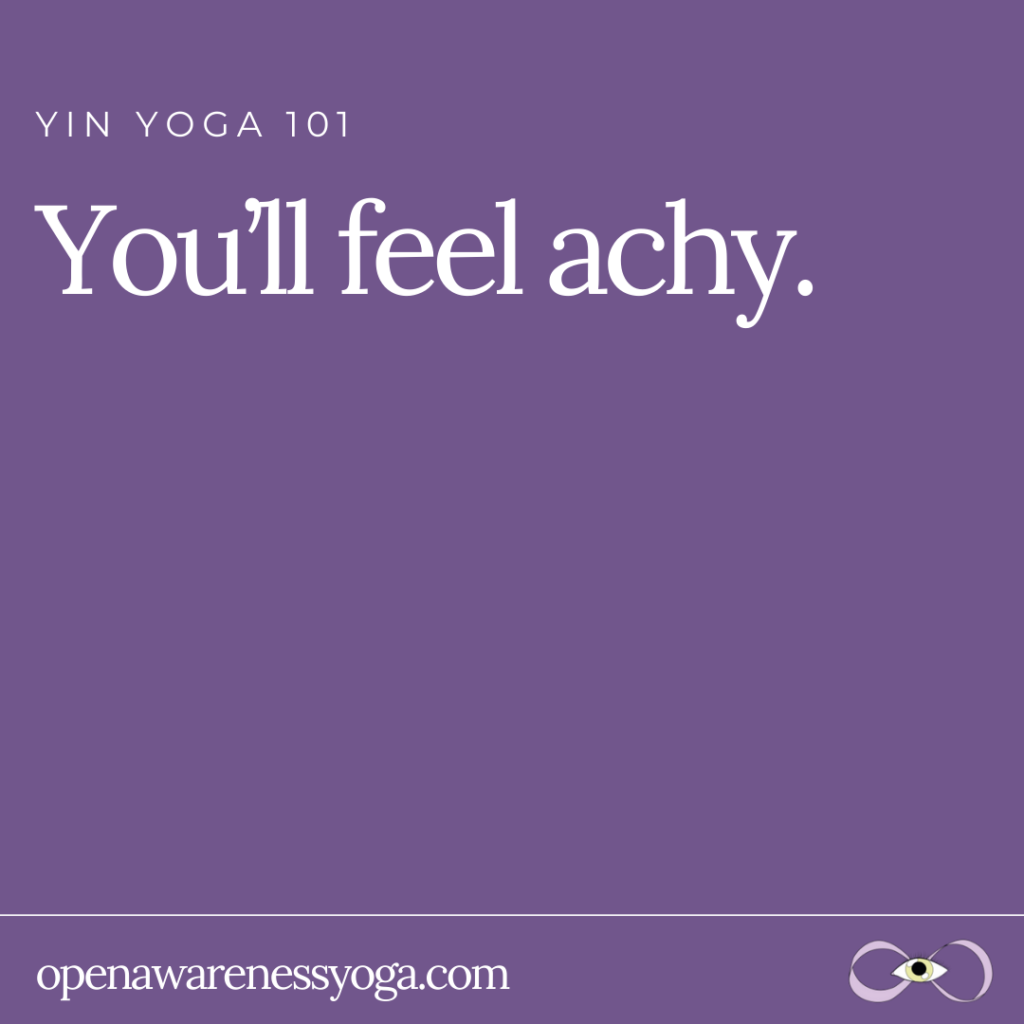
5. You’ll feel achy.
It’s normal to feel achy during yin yoga. The ache means you’re getting into the connective tissues. This is why we move slowly and take time between each pose to recover and feel the echoes of sensation. Coming out of the pose feels so good!
It’s also normal to be sore the day after a yin class, just as it is with muscular exercise. You really are working the body, just in a completely different way. Yin and Yang.
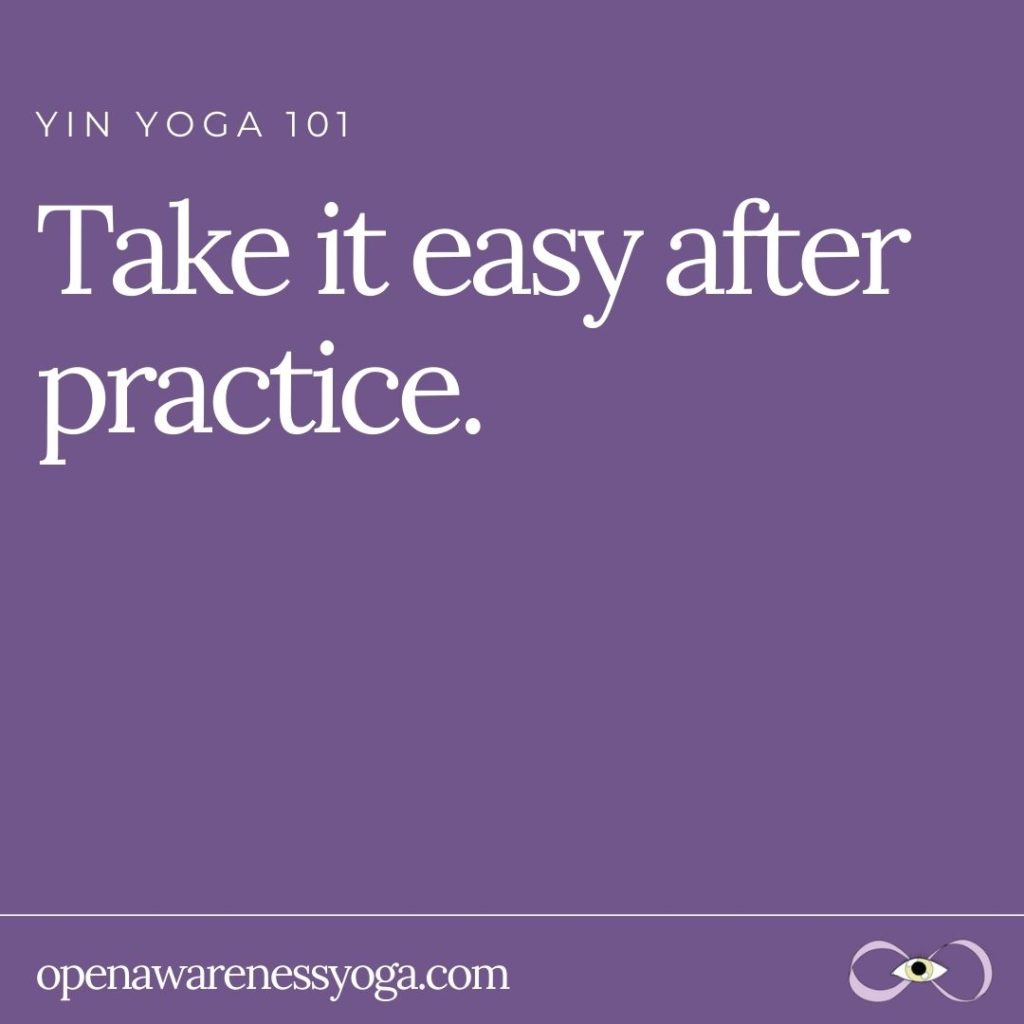
6. Take it easy after practice.
It’s best not to follow a yin practice with strenuous activity. It takes connective tissue some time to recover after a yin pose (because of the creep I mentioned earlier). Studies have not pinned down exact recovery time, but it could be many hours.
During yin you’ve essentially loosened the structural integrity of your body, and you’ll need to recover before playing a game of soccer or doing a strenuous vinyasa class. If you biked to class or otherwise must be active, do so very mindfully and continue to respect the messages your body sends you. Be aware you’re not put together quite like you normally are.
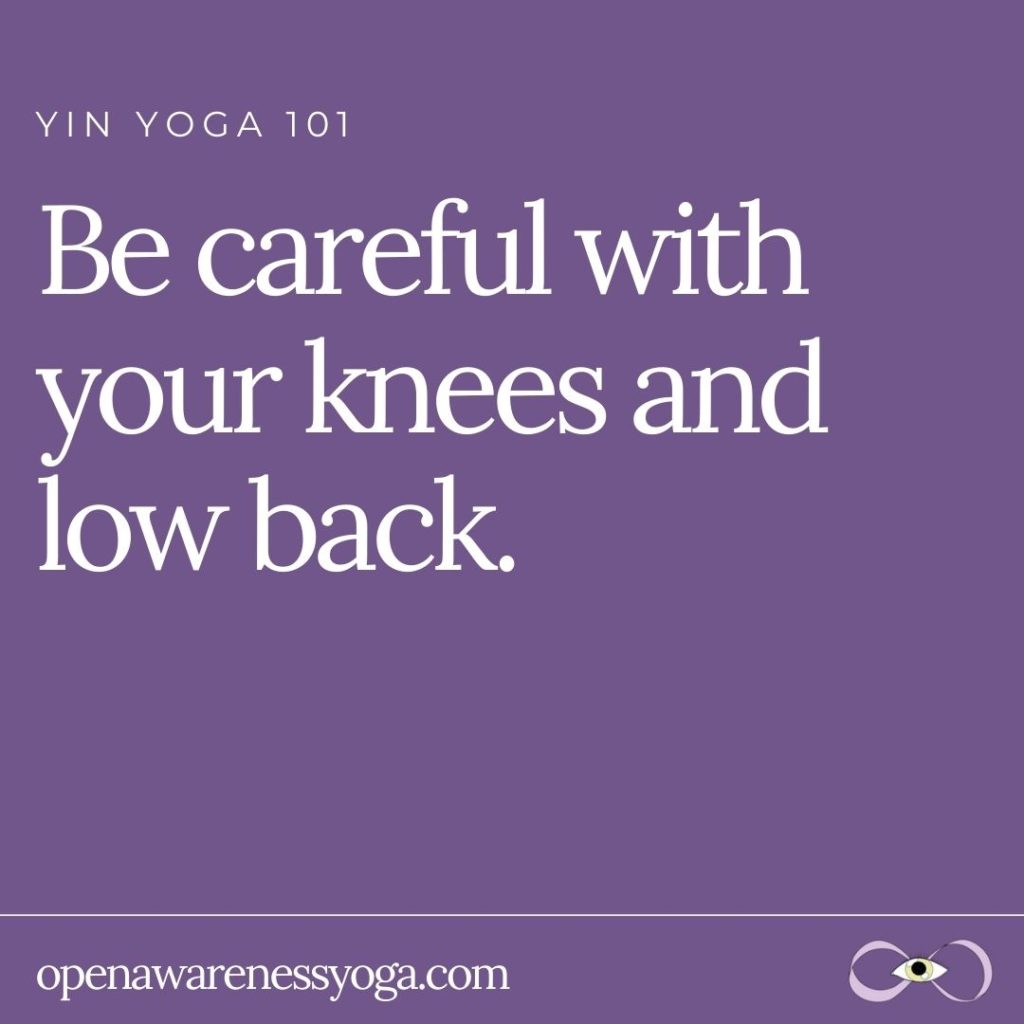
7. Be careful with your knees and low back.
Be cautious with your knees and rounding in the low back. Sensations around the knees, especially for beginners, are best to stay away from. There are many ways to modify the poses to account for knee pain. If your teacher doesn’t mention anything, please ask for help when you need it. If you’re practicing at home, slowly adjust or skip the pose entirely.
The risk for the low back comes when folding forward over your lap. Many bodies have tension patterns (like tight hamstrings) that require the hips to be propped up high on supports so that the low back can extend long and maintain some of its natural forward curve. It’s not bad to round in the low back in some poses, and in fact, there are poses meant for just this stress. However, you don’t want every pose in class to be focused on flexion in the lumbar spine (rounding in the low back).
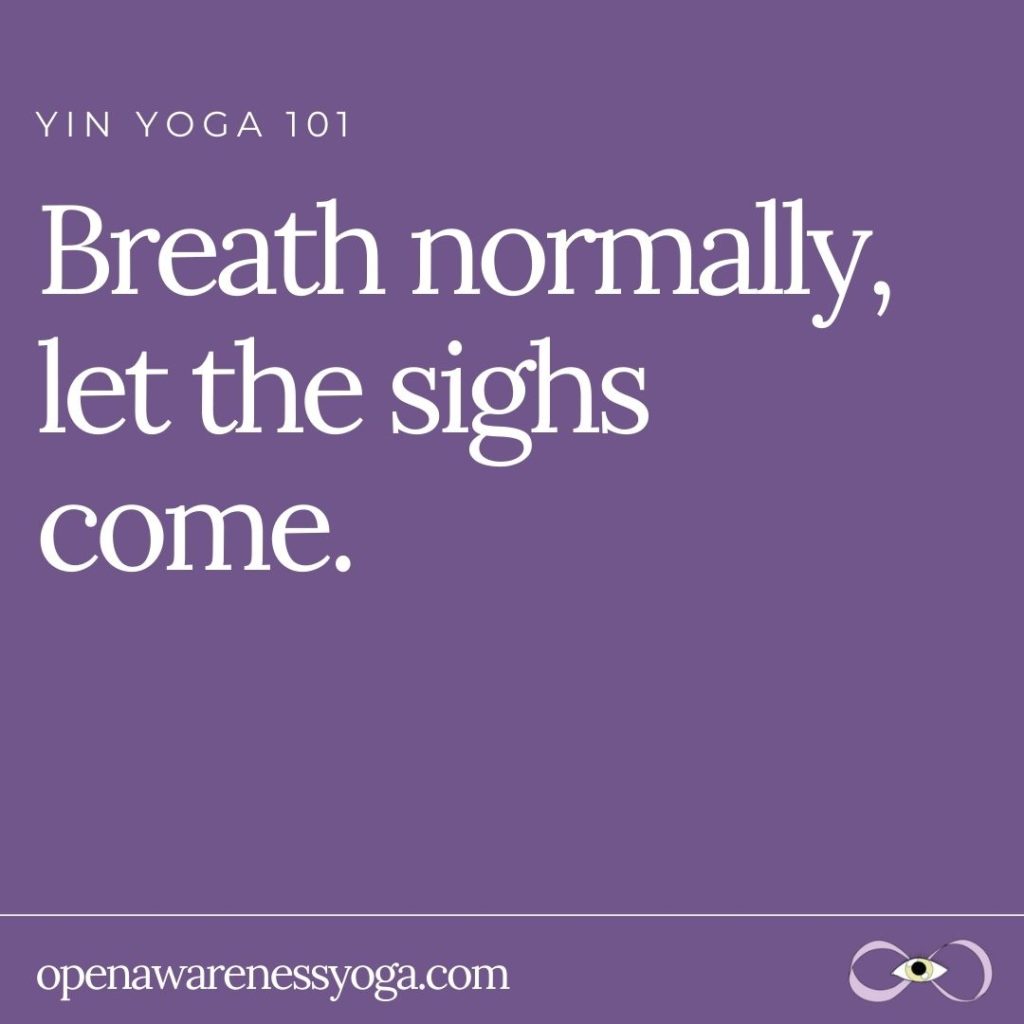
8. Breath normally, let the sighs come.
Unless otherwise instructed, breathe normally throughout practice. Audible mouth exhales are particularly beneficial during a yin practice: ahhhhh’s and mmmm’s and great big sighs work wonders. You’ll notice as you practice that sometimes you just can’t help letting out a groan from time to time. Please don’t hold this in. Yin is about releasing tension, making space, letting go. Sigh it out.
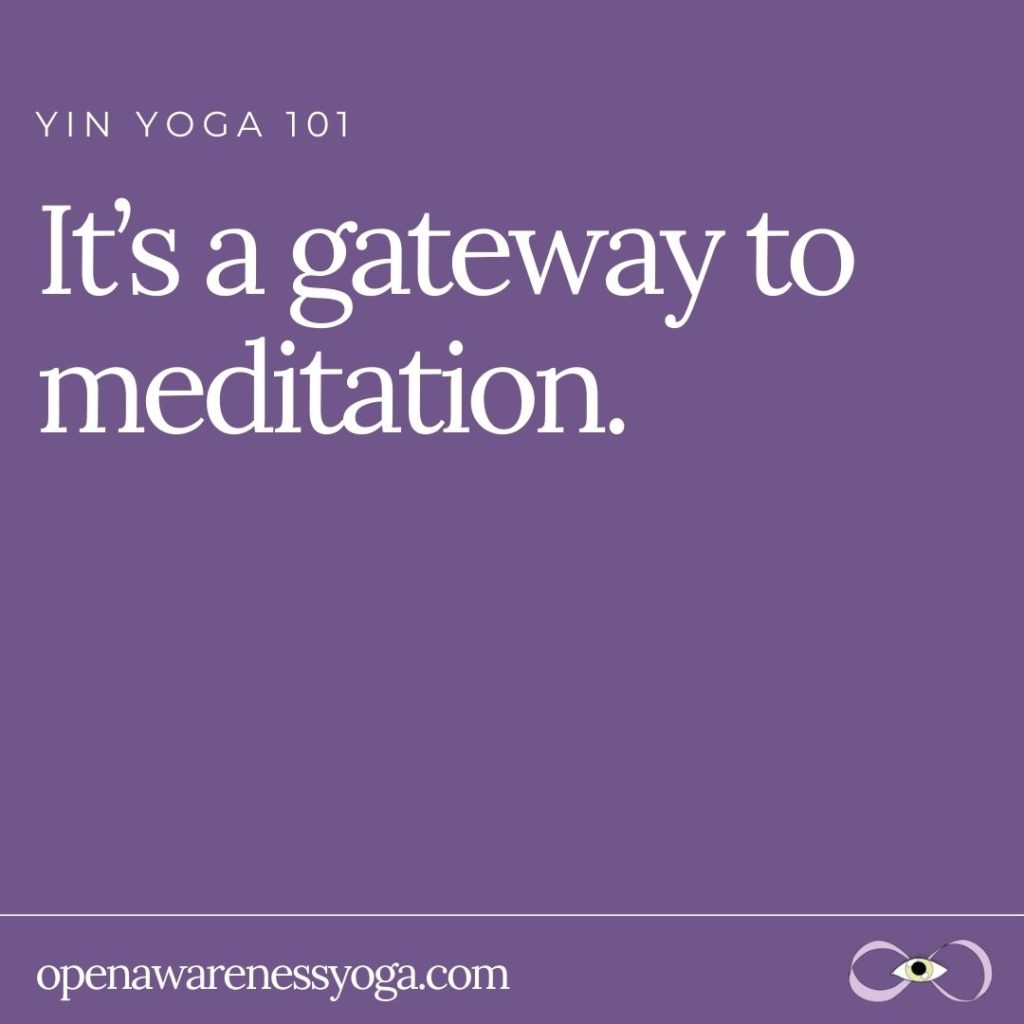
9. It’s a gateway to meditation.
As you practice yin, you’ll start to understand meditation and the meditative mood. You’ve got nothing else to do but be still with your body and the thoughts in your head. A lot can happen on the inside in five minutes, and in class there are usually few distractions from having to deal with this.
Yin is a gateway to meditation. You’re practicing staying present and calm, even in the face of restlessness and sometimes discomfort. It’s easy to understand the benefit of yin yoga in this regard.
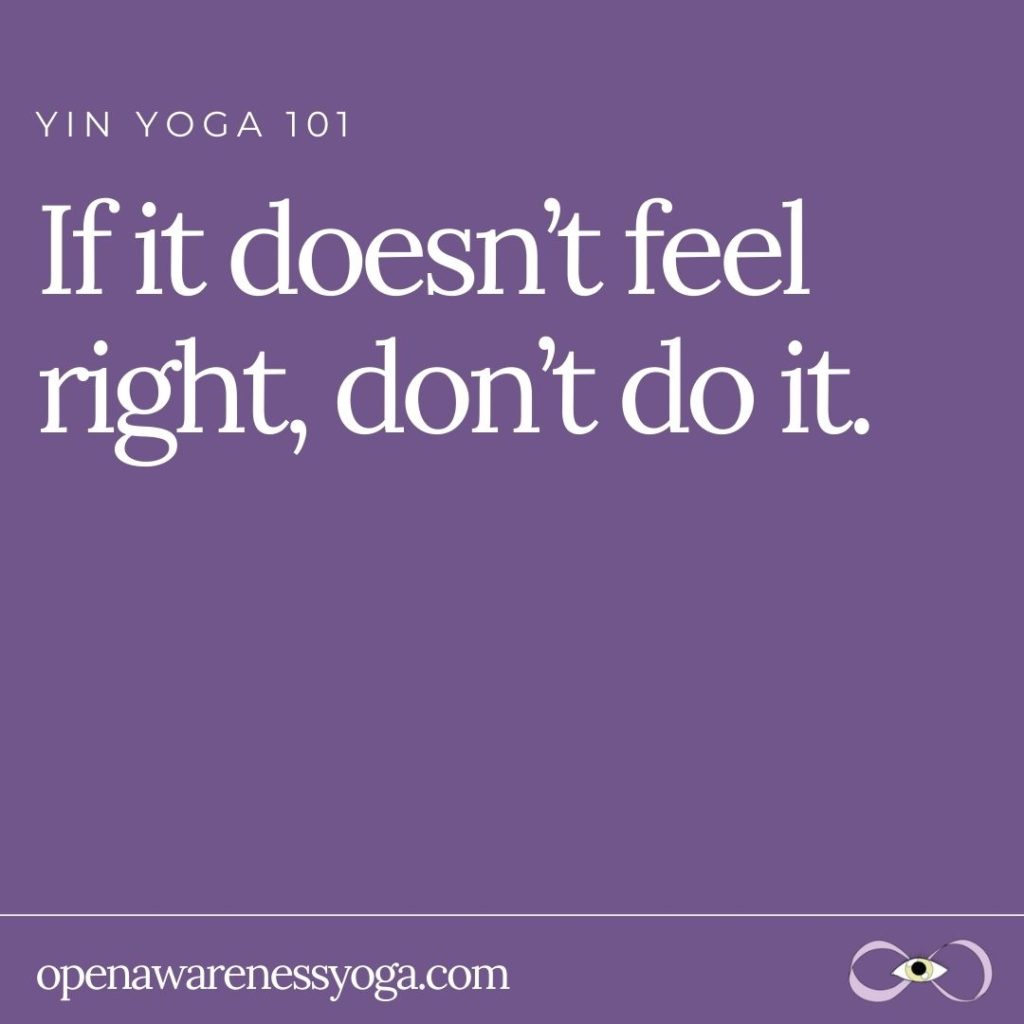
10. If it doesn’t feel right, don’t do it.
As with any other physical activity, certain injuries and conditions require modifications. Every pose isn’t right for every body. It’s important to share your history with your teacher in class so that they can make sure your practice brings healing and not harm. If you practice on your own, be aware of your limitations and skip poses that go against any guidance from your health care providers.
Yin yoga should never cause sharp, sudden, or shooting pains. Nor should you experience numbness or nerve sensations, like pinpricks or tingling. If any of this happens, move slowly to a neutral position, like lying flat on your back, and rest for a few minutes before attempting to move again. Take care not to bear weight on the body part that hurts; do your best and move slow. It also helps to breathe.
If the pain continues, remember RICE: Rest, Ice, Compression, Elevation and make an appointment with an experienced doctor, massage therapist, physical therapist, or another trusted provider.
All told, yin yoga is a balancing practice in a fast-paced world. The approach to the practice is unique and unexpected for many, and the benefits varied and valuable. Yin fits in well as a compliment to yang-style, muscular exercise. It’s a class for your off-day, or when energy is too low to hit the gym hard. It’s a practice for people with sedentary lifestyles who aren’t yet ready for vigorous exercise, but who are ready to start moving and feeling their body again. Yin is there for people who are interested in meditation and stress-relieving techniques, or who sense their bodies are losing flexibility and suppleness as they age.
Yin is different.
Yin is powerful.
Try it out and see for yourself.
Yin Yoga Infographic
